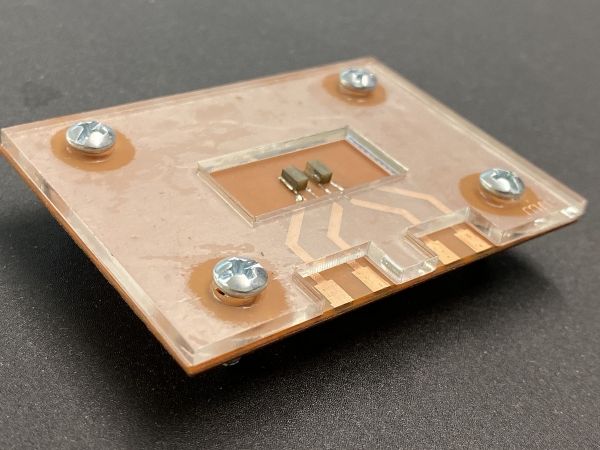Similarly to how a picked lock gives away that someone has broken into a building, the stiffening of a structure surrounding cells in the human body can indicate that cancer is invading other tissue.
Monitoring changes to this structure, called the extracellular matrix, would give researchers another way to study the progression of disease. But detecting changes to the extracellular matrix is hard to do without damaging it.
Purdue University engineers have built a device that would allow disease specialists to load an extracellular matrix sample onto a platform and detect its stiffness through sound waves. The device is described in a study published in the journal Lab on a Chip and demonstrated in a YouTube video at https://youtu.be/hPvY0Sj0vxY.
“It’s the same concept as checking for damage in an airplane wing. There’s a sound wave propagating through the material and a receiver on the other side. The way that the wave propagates can indicate if there’s any damage or defect without affecting the material itself,” said Rahim Rahimi, a Purdue assistant professor of materials engineering, whose lab develops innovative materials and biomedical devices to address health care challenges.
Read more at Purdue University
Photo: A device uses sound waves to detect the stiffness of an extracellular matrix, a structural network that contains cells. Changes in the stiffness of this structure can indicate the spread of disease. (Purdue University photo/Kayla Wiles)


